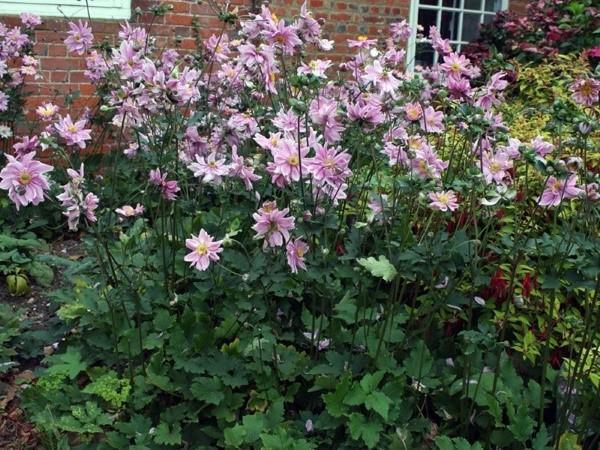Japanese anemone - fragile autumn beauty, not afraid of frost
 For most gardeners, Japanese anemone is associated with spring primroses. Indeed, most species of anemone are spring-flowering plants. However, there are those among them that open their buds only at the end of summer or even at the beginning of autumn. Botanists combined them into one group, and they gave it the name - Japanese anemone (autumn). What is the difference between these flowers and what are the features of their cultivation? Today we will look at these issues in detail.
For most gardeners, Japanese anemone is associated with spring primroses. Indeed, most species of anemone are spring-flowering plants. However, there are those among them that open their buds only at the end of summer or even at the beginning of autumn. Botanists combined them into one group, and they gave it the name - Japanese anemone (autumn). What is the difference between these flowers and what are the features of their cultivation? Today we will look at these issues in detail.
Description of the species
As it already became clear from the name, the main difference between the Japanese anemones is the timing of flowering. However, the plants of this group also have external characteristics. So, in autumn anemones, the peduncles are stronger, and the stems are higher. The height of the bush can reach 1.5 m, although most species have quite compact meter growth. In addition, such anemones have a more powerful and developed rhizome and grow rapidly. Many kidneys are located on the lateral roots extending from the central vertical rod. In just three years, a small bush turns into a lush dense bush.
It will be appropriate to recall that among the Japanese group of flowers there are varieties that bloom in late spring or summer.
The leaves of the Japanese anemone are large enough, collected in a rosette up to 40 cm high. They have a beautiful multi-lobed shape and a jagged edge. But the inflorescences are medium in size, up to a maximum of 8 cm in diameter. They will not impress with a variety of color palette, white color and all shades of pink prevail in color. The shape of the buds is mostly simple, but there are also semi-double varieties.
The varieties of this group are characterized by high frost resistance.
Japanese anemone: cultivation features
In order for autumn anemones to bloom magnificently and profusely, you need to take care of the following things:
- Landing site. The site should be well lit, especially in the morning. The bush will not bloom in full shade.
- The soil. Sour and heavy earth is absolutely not suitable for anemone. In the first case, sand should be added to the flower bed, and in the second - ash. If the soil is poor in nutrients, you need to fertilize organic, but only rotted.
Do not forget about proper plant care. Particular attention should be paid to watering: it is important to remember that excess moisture is harmful to anemones. The flower hibernates well, but in regions with especially fierce winters, it may freeze a little. To prevent this from happening, it is better to cover the bushes with spruce branches. However, even after a cold winter and partial freezing, Japanese anemones are quickly recovering and increasing their previous scale. So grow them for your pleasure and admire the beautiful flowers until the very frost.